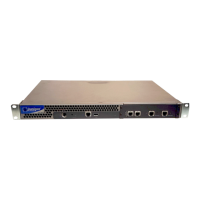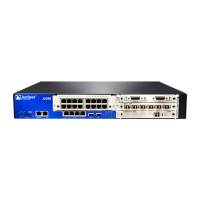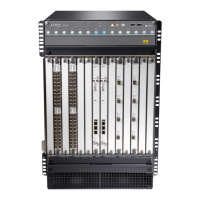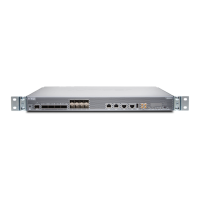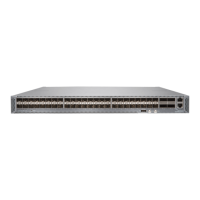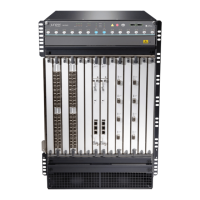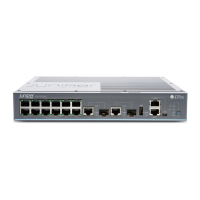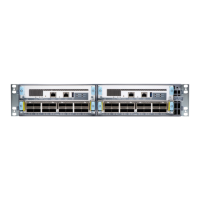Related
Documentation
Ethernet Networking•
• Layer 2 Features for a Bridging Environment on page 21
• Example Roadmap: Configuring a Basic Bridge Domain Environment on page 22
• Example Step: Configuring Interfaces and VLAN Tags on page 24
• Example Step: Configuring Bridge Domains on page 30
• Example Step: Configuring Integrated Bridging and Routing on page 34
Example Step: Configuring Integrated Bridging and Routing
Router 2 and Router 3 on the bridging network act as a kind of gateway to the Layer 3
routers in the rest of the network. Router 2 and Router 3 must be able to route packets
as well as bridge frames. This requires the configuration of integrated routing and bridging
(IRB) on Routers 2 and 3. The link to the router network is xe-2/1/0 on Router 2 and
xe-1/1/0 on Router 3.
You configure IRB in two steps:
1. Configure the IRB interface using the irb statement.
2. Reference the IRB interface at the bridge domain level of the configuration.
IRB supports Layer 2 bridging and Layer 3 routing on the same interface. If the MAC
address on the arriving frame is the same as that of the IRB interface, then the packet
inside the frame is routed. Otherwise, the MAC address is learned or looked up in the MAC
address database.
NOTE: You configure IRB on Router 2 and Router 3. The Virtual Router
Redundancy Protocol (VRRP) is configured on the IRB interface so that both
links can be used to carry traffic between the bridge domain and the router
network.
To configure IRB on Router 2 and Router 3:
1.
Configure the router link and IRB on Router 2:
[edit]
interfaces {
xe-2/1/0 {
unit 0 {
family inet {
address 10.0.10.2/24; # Routing interface
}
}
}
irb {
unit 0 {
family inet {
address 10.0.1.2/24 {
Copyright © 2012, Juniper Networks, Inc.34
Junos OS 12.1 MX Series 3D Universal Edge Routers Solutions Guide
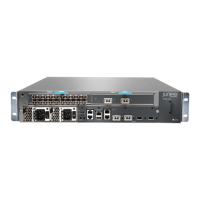
